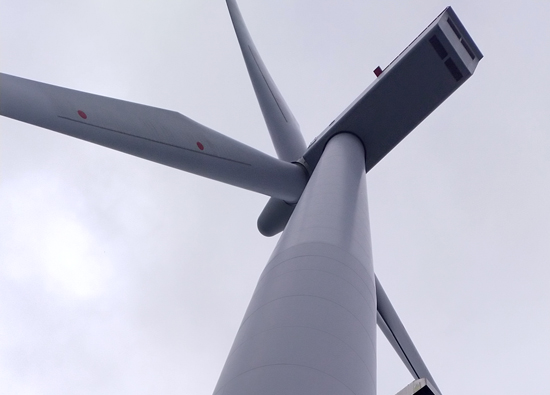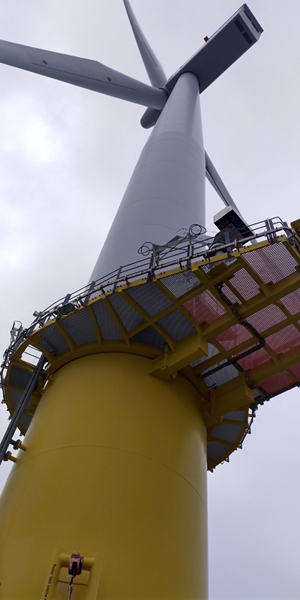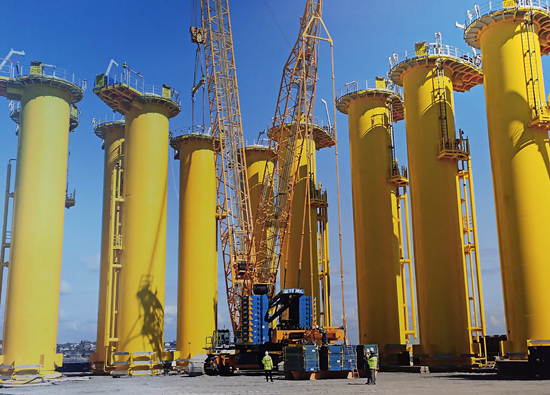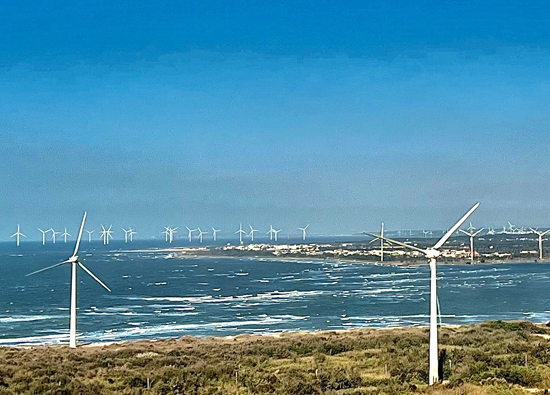09.2023 Special Report
Taiwan's Green Circuit Journey
Zhufeng Power Preparation Office / Provided


 In order to achieve the long-term goal of net zero emissions by 2050, Taiwan plans to increase the proportion of renewable energy in total electricity to 60-70%. At the end of last year, the National Development Commission announced the "Stage Objectives and Actions for Net Zero Transformation" and announced "12 key strategies", specifically reducing the carbon reduction target by 20% compared to the base period of 2005 and increasing it to 24%.
In order to achieve the long-term goal of net zero emissions by 2050, Taiwan plans to increase the proportion of renewable energy in total electricity to 60-70%. At the end of last year, the National Development Commission announced the "Stage Objectives and Actions for Net Zero Transformation" and announced "12 key strategies", specifically reducing the carbon reduction target by 20% compared to the base period of 2005 and increasing it to 24%.Difficult Green Energy Road 2050 with Difficulties in Net Zero Emissions
The renewable energy planned by the Ministry of Economic Affairs is divided into two main forces: the capacity of solar photovoltaic devices will be 20GW in 2025, increased to 31GW in 2030, and 40-80GW in 2050; The capacity of offshore wind power installations will be 5.6GW in 2025, 13.1GW in 2030, and 40-50GW in 2050. But as of the end of April 2023, the capacity of wind power installations was only 1.9GW, while that of optoelectronics was 10.5GW. The significant lag in construction progress is worrying.
On the demand side of green energy, the industry is constantly struggling to find a source of green electricity. Europe and America are forcing companies in the global industrial chain, especially export-oriented industries, to set carbon reduction strategies in response to the net zero target. Taiwan's "electricity consumption clause" also requires that 10% green electricity must be used by 2025, otherwise a deposit must be paid; But there are many in the industry who cannot buy green electricity or build wind/photovoltaic factories. According to reports, the vast majority of the offshore wind power plant capacity that just won the bid this year has been bought by TSMC, and other companies that need green power have had to bear the burden. The supply side of green energy cannot be broken through, and even if the demand side is intentionally expanded, there is no source. Without discussing 2050, even the goal of 2025 cannot be achieved. What is the problem?
Maximizing the use of limited land resources
Carefully examine the "wind/photovoltaic strategy" among the 12 key strategies: in terms of photovoltaic, there are land use policies such as fishing and electricity symbiosis and agricultural electricity symbiosis. However, the offshore wind power sector emphasizes that "it involves fishing operations, military training areas, waterways, and other areas, and will continue to discuss with various departments". The inventory can be set up in the field, and "sensitive space on the site is indeed excluded". However, this "exclusion method" may be a "resource waste method". For example, the offshore wind power foundation piles in Miaoli play a "fishing reef effect", creating new fishing grounds and fish schools overflowing, and fishermen are all happy. Can't the fishery truly integrate with wind power? Artificial fish reefs, protected reefs, and wind turbine foundation piles have similar fishing functions. Can't they coexist? If the sea channel is vertically integrated with the airspace channel and shares upper and lower space, can more fields for wind power construction be moved out? By adjusting the flight altitude of the aircraft and slightly improving the navigation facilities, the sea wind field near the airport can be fully utilized, and efficient wind turbines in the future do not need to be limited to 300 meters in height. Many global cases have shown that defense facilities, military and civilian airports, and wind power can and must coexist.
Taiwan is surrounded by the sea on all sides and located on the Tropic of Cancer, which should be conducive to the development of offshore wind power and optoelectronics. However, due to the dense population, numerous mountains and few plains, as well as the unfavorable wind turbine foundation in the eastern Pacific Deep Sea Trench, in order to ensure the rarity of wind/photovoltaic plant sites and make the land (and sea area) "usable", it is recommended to increase the capacity per unit area of the site. However, according to current regulations, only 5MW wind turbines need to be installed per square kilometer of sea area, and a distance of 2000 meters must be reserved between each wind farm, Even two wind farms from the same developer must be separated. In terms of solar photovoltaics, the Sustainability Development Association of the solar photovoltaics industry recently stated that if the land acquisition issue is not resolved, solar power generation cannot meet the standards.
Actively developing a path of integration from top to bottom
Net zero emissions cannot be achieved by individual departments, and the construction of green power is not entirely the responsibility of the Ministry of Economic Affairs or manufacturers. Conflicts of interest are inevitable and require policy guidance and coordination communication from the Executive Yuan.
Similar to Taiwan, the UK is also surrounded by the sea on all sides. They plan to increase the offshore wind power capacity from the current 11GW to 50GW by 2030, accounting for 50% of all renewable energy. In order to achieve its goals, the British government believes that "change must be top-down", so it has launched the "Offshore Coordination Support Scheme", which has led to a task force composed of the Ministry of Defense, the Department of Energy, the Royal Property Office, and wind power industry to implement the three stages of "tolerable, acceptable, and durable solutions". In the autumn of 2021, the Royal Air Force released a white paper titled "Cooperation between Air Defense and Offshore Wind Power, Moving towards Net Zero", resulting in a significant release of offshore wind farm sites in the UK. The expansion of available wind farm sites in the Taiwan Strait and the full utilization of the sea area also require top-down guidance from the Executive Yuan, with active cooperation from various departments. There is still a chance to achieve the target of 40-50GW by 2050.
Energy and water resources are major issues that are crucial to Taiwan's economy, environmental protection, and social security. In recent years, the competent authorities have made efforts to develop green energy. In addition to supporting the green economy and fulfilling the Earth's sustainability development responsibilities, it is more realistic to reduce dependence on imported energy. In addition, if the net zero target is not achieved by 2050 or falls far behind international requirements, it will also endanger Taiwan's security. We look forward to the concerted efforts of all sectors to support the development of Green Energy, and the conflicts of interest between departments will naturally be resolved.
#


















